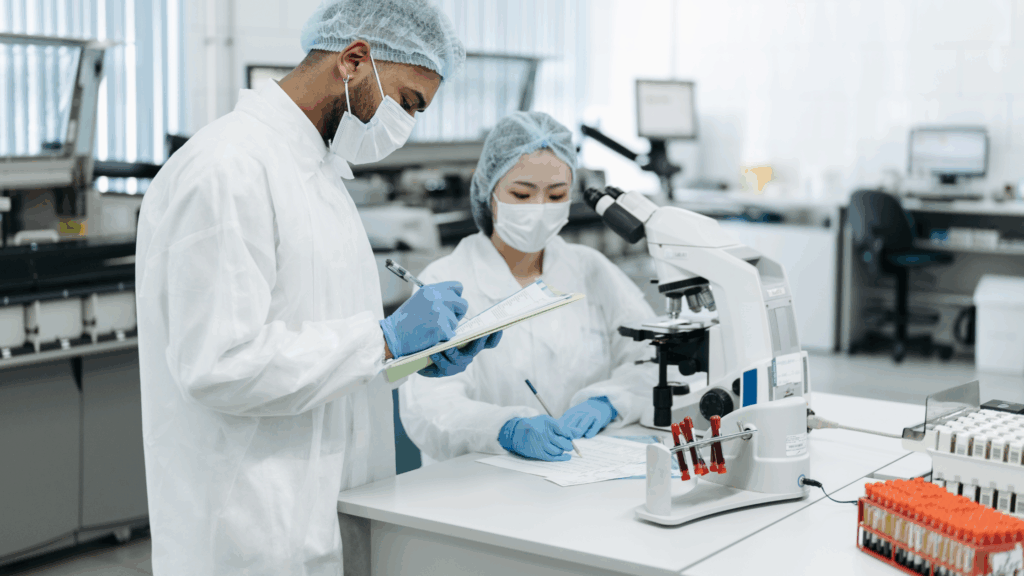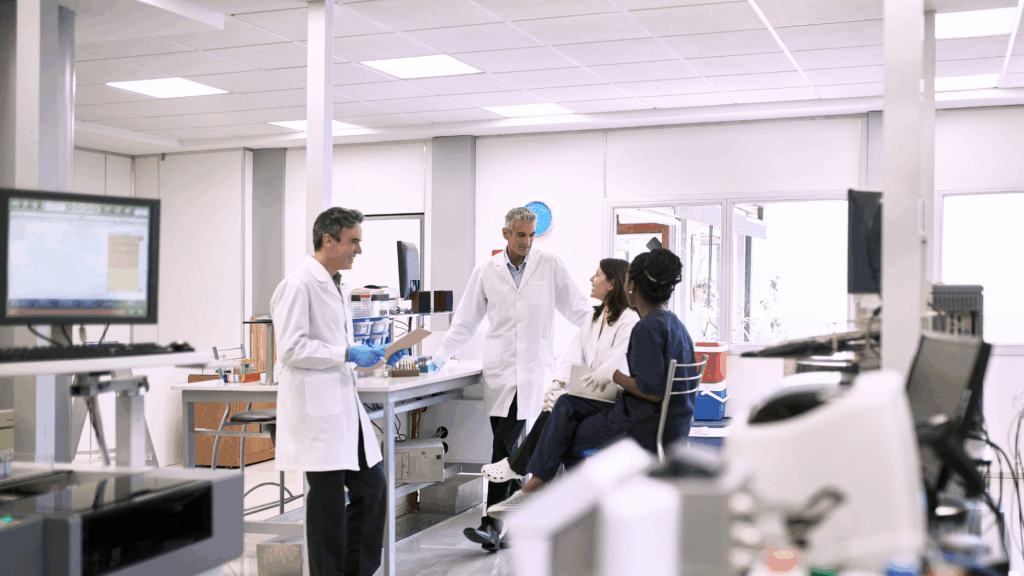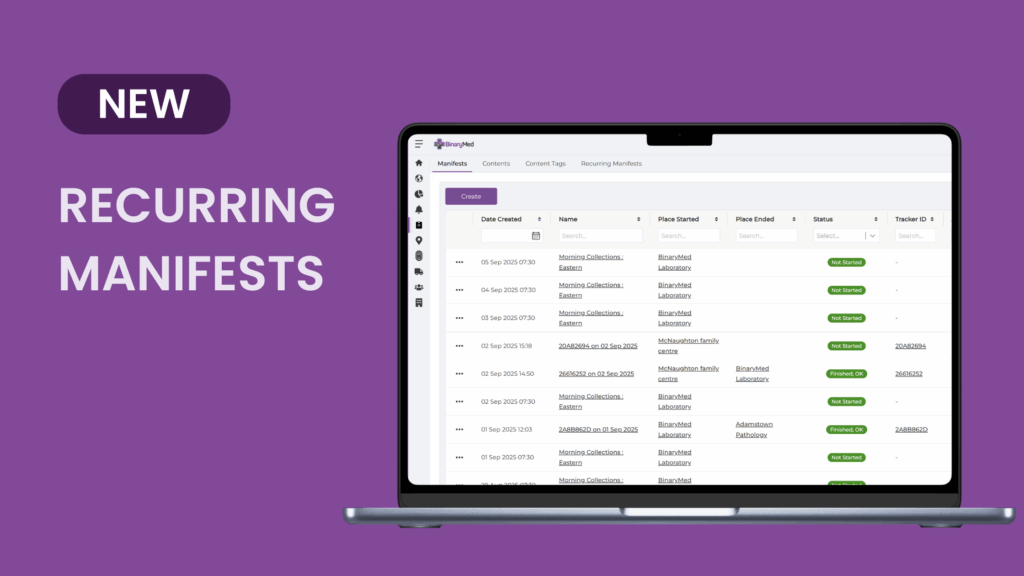Effective sample tracking systems are essential for pathology laboratories to maintain the integrity and accountability of each specimen throughout its lifecycle. As regulatory requirements grow stricter, labs need to rely on advanced systems to ensure accuracy, minimise errors, and improve efficiency. This post delves into the various types of sample tracking systems available, from manual methods to IoT-based solutions, and why BinaryMed’s Cicada Voyager offers an innovative approach to overcoming sample tracking challenges.
What is a Sample Tracking System?
A sample tracking system manages specimens as they move through the collection, transport, and storage stages, allowing labs to obtain data on the location and/or the temperature of each sample. Depending on the type of specimen tracking system, labs may access real-time data or retrieve information only upon specimen arrival. By ensuring traceability and compliance with standards like ISO 17025 and ISO 15189, these systems uphold quality and integrity. Modern specimen tracking systems also offer real-time alerts, environmental monitoring, and LIS integrations, which have all become critical for ensuring samples meet quality standards for accurate diagnostic results.
5 Types of Sample Tracking Systems
1. Manual Sample Tracking Systems
Manual tracking relies on handwritten logs, excel spreadsheets, or basic handwritten labels.
Benefits
It’s a low-cost option, making it accessible for smaller labs with limited budgets or those dealing with low sample volumes.
Limitations
Manual specimen tracking systems are highly time consuming, requiring lab staff to log details, verify sample information and locate samples manually. This approach is more prone to human error and lacks real-time tracking. Without automated monitoring, there is a greater risk of loss, mishandling, or delays in locating samples.
2. Barcode-Based Specimen Tracking Systems
Barcode-based sample tracking systems assign a unique barcode to each sample, encoding its identification number. Each labeled sample is scanned with a barcode reader, allowing efficient tracking and updating throughout the sample’s lifecycle. This approach streamlines sample identification and minimizes manual data entry errors.
Benefits
Barcode-based sample tracking systems assign a unique barcode to each sample, encoding its identification number. Each labeled sample is scanned with a barcode reader, allowing efficient tracking and updating throughout the sample’s lifecycle. This approach streamlines sample identification and minimizes manual data entry errors.
Limitations
Barcode-based sample tracking systems assign a unique barcode to each sample, encoding its identification number. Each labeled sample is scanned with a barcode reader, allowing efficient tracking and updating throughout the sample’s lifecycle. This approach streamlines sample identification and minimizes manual data entry errors.
3. RFID Sample Tracking Systems
Radio Frequency Identification (RFID) systems allow for automatic sample tracking via small, wireless tags. Scanning infrastructure is installed at labs and collection centers and tags are placed on specimens.
Benefits
RFID specimen tracking systems provide faster processing and a wider tracking range, as they don’t require line-of-sight scanning. The technology is ideal for bulk scanning and can save considerable time in high-throughput labs.
Limitations
RFID systems can be costly, making them less feasible for smaller labs due to the expense of expensive RFID tags and necessary infrastructure. Reliability issues may also arise from environmental interference. Additionally, RFID’s data uploading capabilities are limited to the proximity of RFID scanners, providing only the last known locations of samples rather than real-time tracking. Moreover RFID does not record environmental conditions, which can be a critical shortfall for certain compliance standards.
4. LIMS (Laboratory Information Management Systems)
LIMS is used in conjunction with barcodes to track samples by managing and automating the workflow of sample processing and associated data. It provides a centralised platform to log all sample details, track their movement through the lab, and record analytical results.
Benefits
LIMS offers a centralised digital platform for storing and accessing sample information, reducing the need for paper records and supporting efficient data handling.
Limitations
Although comprehensive, LIMS may lack the continuous tracking capabilities found in IoT systems, as it’s often limited to in-lab processes. Additionally, LIMS implementation can be complex and may require extensive staff training.
5. Cellular IoT Tracking Systems
Cellular IoT-based sample tracking systems offer real-time monitoring by leveraging cellular networks to transmit sample conditions and locations directly to the cloud, no matter where they are. Unlike Bluetooth-based systems that only upload data when in proximity to a gateway, cellular IoT provides continuous, live updates, ensuring visibility throughout the entire transport journey.
Benefits
Real-time monitoring allows labs to receive instant alerts and swiftly address any issues, protecting sample integrity. This system also enables remote data access and eliminates the need for manual data logging, offering complete visibility of samples during transport.
Limitations
Cellular IoT specimen tracking systems are dependent on connectivity, and depending on network coverage, may not be available in certain areas.
Real-Time Sample Tracking with BinaryMed
BinaryMed’s IoT-based tracking solution provides an all-in-one solution that integrates continuous location and temperature monitoring with cloud connectivity. This solution is designed for labs needing precise, 24/7 sample visibility and control during the preanalytical phase. Key features include:
- Real-Time Monitoring: The Cicada Voyager tracks temperature, movement, and location, providing labs with a comprehensive view of each sample’s journey.
- Automated Data Uploads: Data is automatically sent to the Binary Cloud Platform, eliminating the need for manual data retrieval and ensuring real-time visibility.
- Live Alerts for Proactive Management: Labs receive instant notifications for any deviations from optimal conditions, enabling them to quickly address issues.
- Instant Compliance Reports: Generate detailed reports, streamlining audit preparation for regulatory standards.
- Completely Wireless Solution: The Cicada Voyager is a plug-and-play device that does not require additional infrastructure or scanners.
- API for LIMS Integration: Seamless integration with LIMS, LIS, and other software ensures that data can be easily incorporated into existing workflows.
Conclusion
Sample tracking systems come in various forms, each with its strengths and limitations. For labs requiring precision and accountability, advanced IoT systems, such as BinaryMed’s Cicada Voyager, provide unparalleled visibility and control. By leveraging real-time data, continuous monitoring, and cloud integration, BinaryMed’s solution supports optimal sample integrity, regulatory compliance, and streamlined operations, helping labs meet the highest standards in diagnostics and research.
If you’re interested in learning more about how BinaryMed’s IoT sample tracking solution can support your lab, contact us at [email protected] or schedule a demo.




